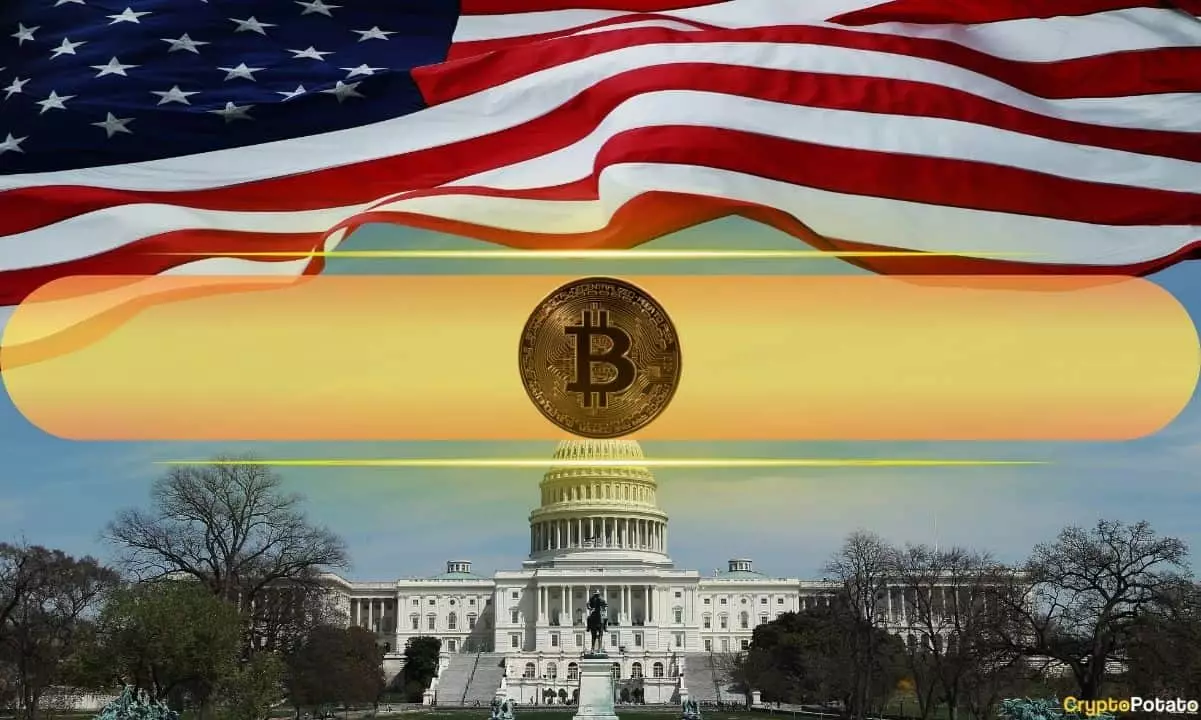In an era marked by technological advancements and increasing digitalization, the U.S. government is ambitiously navigating the waters of cryptocurrency. Bo Hines, the Executive Director of the President’s Council of Advisers on Digital Assets, recently unleashed a groundbreaking initiative: the establishment of a U.S. Bitcoin Reserve. This plan is not merely a mundane economic strategy; it represents a genuine attempt to redefine how the government engages with digital currencies. Instead of relying solely on traditional fiscal frameworks, the administration is contemplating innovative funding avenues, such as tariffic developments and the revaluation of existing gold assets. This initiative alone could transform the financial landscape.
It’s refreshing to see the government exploring alternative revenue streams, given that conventional avenues often fall short in generating sustainable income. Hines emphasized the wealth of possibilities ahead when he stated, “There are literally countless ways in which you can do this.” This openness to unorthodox funding mechanisms indicates a striking shift towards a more adaptive and forward-thinking governmental approach.
The Bitcoin Act of 2025: A Legislative Breakthrough?
One notable element of this crypto-forward vision is the proposed Bitcoin Act of 2025, championed by Senator Cynthia Lummis. This legislation intends to substantially enhance the valuation of U.S. Treasury gold certificates, which currently sit at a historical price that hardly reflects today’s market realities. Should the government decide to revise these certificates from an impractically low $43 per ounce to a more market-reflective $3,200, the resultant surplus could be astoundingly redirected toward Bitcoin acquisitions. This would allow the U.S. to build a potent digital reserve without incurring losses from selling physical gold—a move that could be revolutionary.
However, the shining light of this initiative is obscured by shadows. While the ambitious plans represent exciting opportunities, the transition from proposal to reality remains a daunting hurdle. These reforms have yet to achieve Congressional endorsement, and one must question whether elected representatives will grasp the visionary nature of this initiative or succumb to the fears that often characterize governmental shifts towards cryptocurrencies.
Taxpayer-Free Funding: A Misleading Proposition?
Hines maintains that the initial funding for the Strategic Bitcoin Reserve would derive from Bitcoin seized through civil and criminal forfeiture, claiming that this approach imposes no burdens on taxpayers. Although this idea sounds attractive at first glance, it bears examining. The notion assumes that seizing ill-gotten gains is a panacea for state funding, but it is crucial to consider the broader implications of such a funding model. Will it create an incentive for broader overreach within law enforcement, making the state more predatory? Given the New Age fascination with cryptocurrency, the rush to seize assets can lead to due process violations that put individual liberties at risk.
Furthermore, the assertion that funding a Bitcoin Reserve through forfeiture is “taxpayer-free” can be disingenuous. Optimistically relying on this type of revenue stream may pave the way for more misfortune than expected. A sustainable, balanced approach must involve consistent and predictable revenue streams that do not rely on the successful enforcement of law.
Blockchain as the Future of Financial Interaction
Hines passionately advocates for a reimagining of the way American citizens interact with their finances through blockchain technology. Indeed, the traditional banking model feels increasingly archaic in a world seeking transparency and efficiency. Delays, hidden fees, and lackluster transparency plague the conventional financial system. Who wouldn’t prefer a system free from these burdens? Blockchain technology promises to remedy these persistent issues, creating a smoother, more efficient financial landscape.
However, while the government expresses its ambition to elevate the U.S. to be the “crypto capital of the world,” it must proceed with caution. With great potential comes great responsibility; the administration must implement thoughtful policies ensuring that innovation occurs without compromising security or privacy. Moreover, in its flurry to dominate the digital asset sphere, the government must remain vigilant against the hype that often leads to regulatory overreach—a danger that could stifle the vibrant and free-market principles we seek to protect.
While the aspiration for a U.S. Bitcoin Reserve is undeniably forward-thinking, it demands a balanced and critically aware approach to avoid pitfalls that could tarnish its promise.
















Leave a Reply